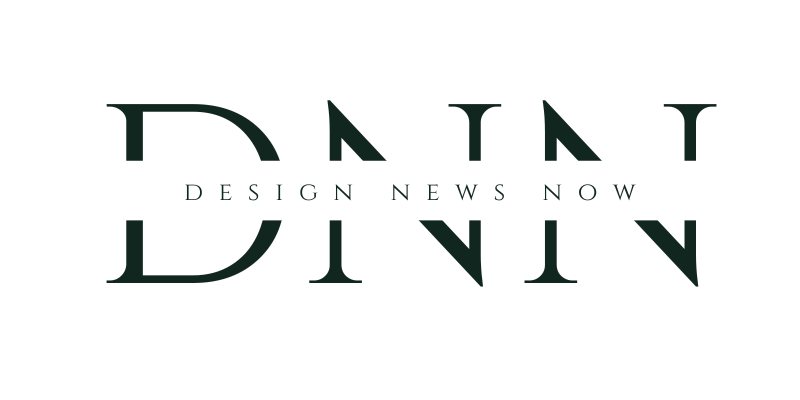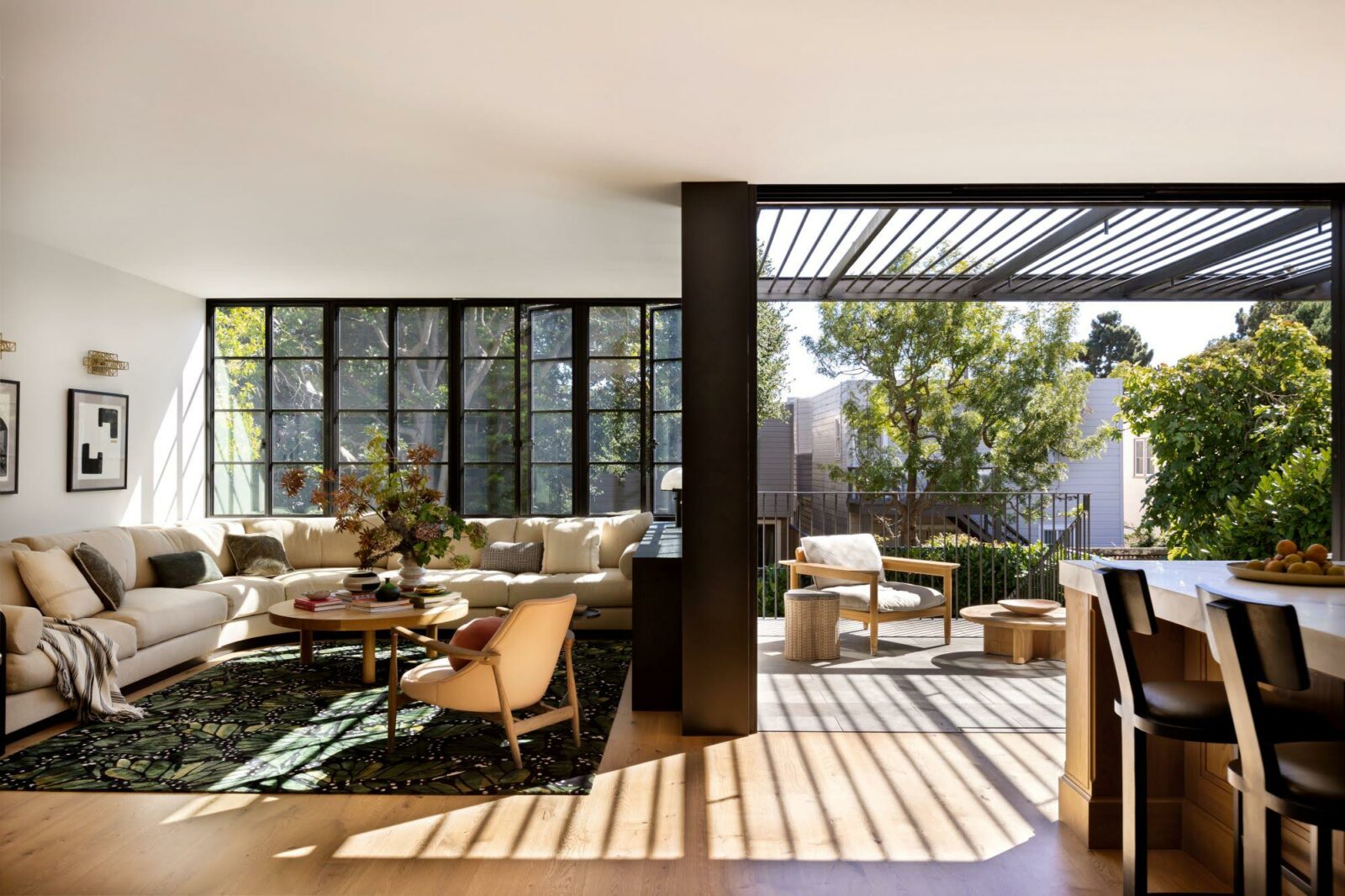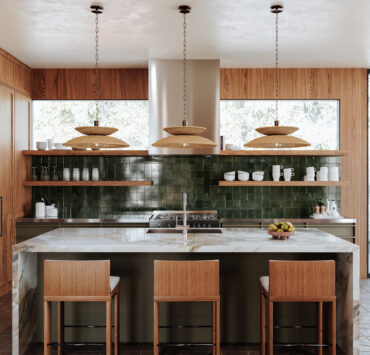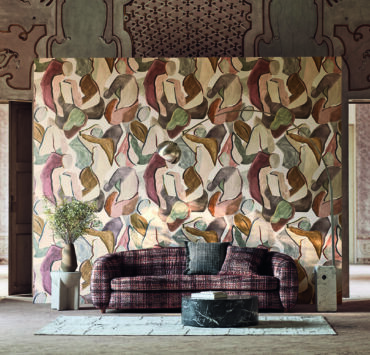(This is part of an occasional series of conversations with interior designers around the country about what’s driving their success, their favorite trick of the trade and what they’d like to be doing more of in the coming year or two.)
Ask Regan Baker how she has grown her interior design business and the answer is people — from her team of 23 to the “nice people” she prefers as clients, many of whom become repeat customers, referring friends to Regan Baker Design, too.
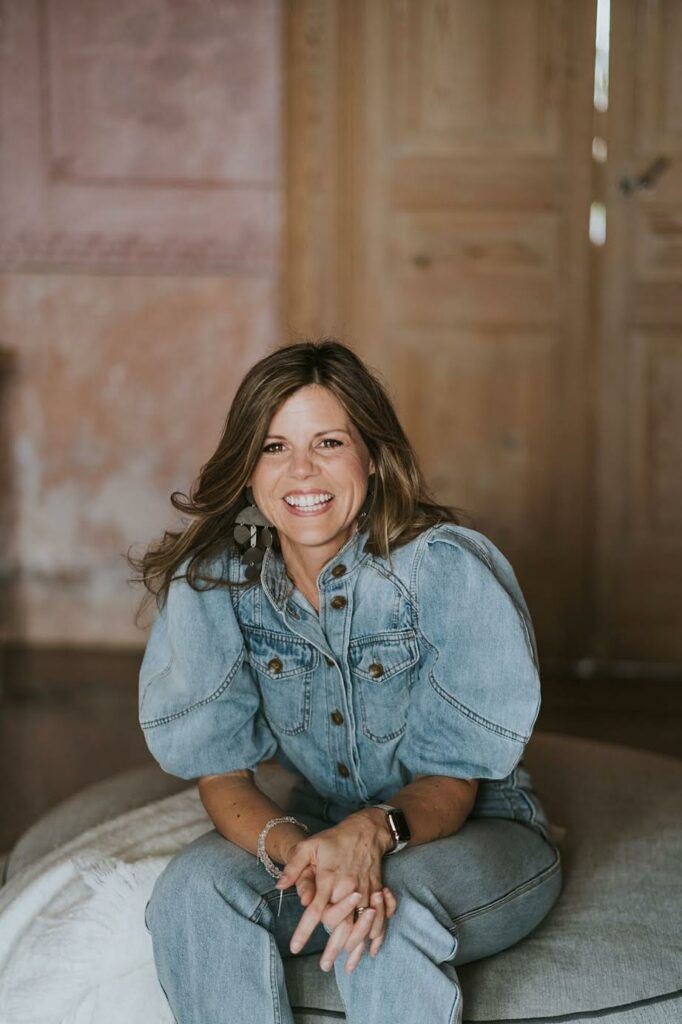
And, right now, she’s excited about working with a new team of people — a client, architect and artisans — on a project in Lake Como, Italy.
Building her business
Baker has worked in interior design since graduating from Texas Tech University in Lubbock, including stints in Dallas, Austin and Chicago, where she worked for The Gettys Group, a high-end hospitality design and development firm.
She picked up a private interior design job in California in 2006 and started traveling back and forth, opening her own firm shortly after.
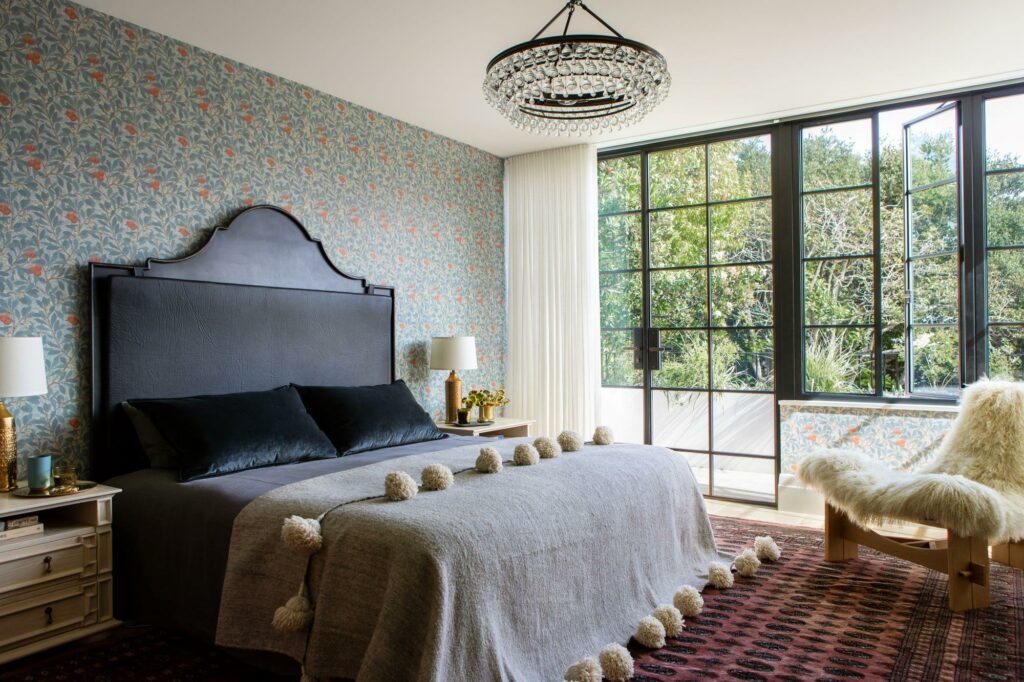
She and her husband, Jace Baker, eventually settled in San Francisco around 2012. A decorator’s showcase there in 2014 “is probably what put me on the map,” recalls Baker, founder and principal of her firm. Through that, her business started to grow quicky, adding staff and taking on bigger projects.
Although she loved her time working for The Gettys Group, her own firm specializes in high-end residential design. “I started in commercial design. And that was probably my most fun experience ever,” she says. “But there’s not as much of a relationship component, and I really enjoy the relationship portion. So, do I want to do boutique hotels? Do I want to do coffee shops or offices or retail? If I had the opportunity, that would be amazing but right now I’m not actively seeking it.”
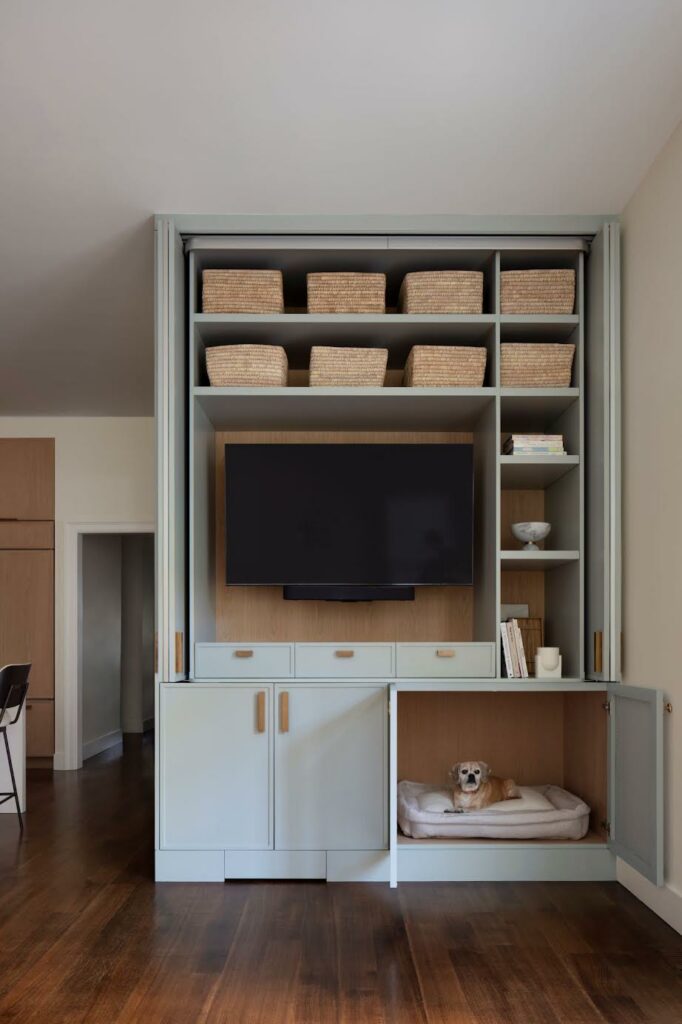
Baker has built a firm known for white-glove service, promising “exceptionally personal, thoughtfully refined” design. Regan Baker Design typically completes 5-7 large projects a year, about half remodels and half new builds. She likes to work on a few smaller projects, such as a main floor remodel, if the client and space are right.
“The smaller projects allow us to be more nimble and often they become the most interesting,” she says. “From an interior design standpoint, we like to move quickly, and those smaller projects are like instant gratification.”
What makes a project fun
Residential projects in the San Francisco Bay area keep the firm busy, but Baker also frequently works in Southern California, too, including luxury beach communities like Laguna Beach, Newport Beach, Manhattan Beach and resort areas, including Lake Tahoe and Sun Valley, Idaho.
Her newest project will have her flying to Lake Como for a gut renovation of an old villa. She’s excited about the new experience and challenge of working with a local architect and sourcing materials and furnishings in the area.
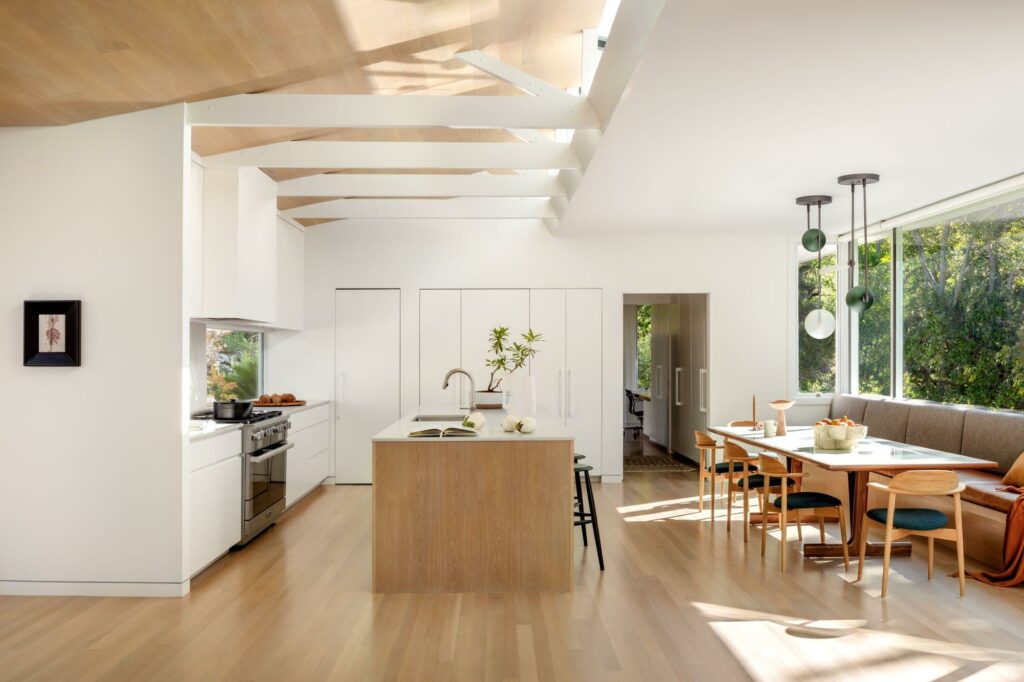
“I think it’s going to be the most inspiring thing I’ve ever done, because we’ll be in a different country and on that beautiful lake,” she says. “(The client) wants us to use all local vendors and, when it comes to the architectural finishes, we’re going to use reclaimed wood, tile. We’re going to try to recreate the home but in a more modern way, which I think is amazing.”
The Lake Como project may become her favorite project eventually but that title is currently held by something closer to home — the Modern Deco Hacienda in San Francisco, which was featured in House Beautiful.
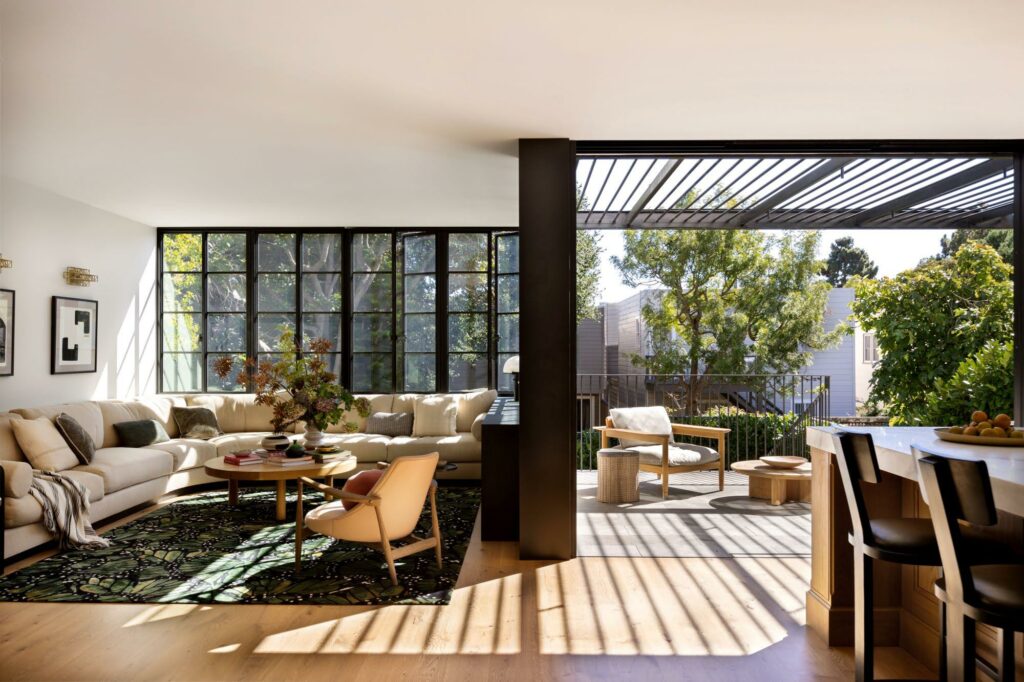
“It was basically a full gut remodel, and she was the ideal client. She has a major love of interior design, and her Pinterest board was insane. It’s just nice when we work with somebody who is so in tune with what they want and then also values your opinion in helping guide that,” Baker says. “We added detail through millwork and molding and a mix of traditional and modern elements to truly execute her vision, which, of course, aligned with my passion to curate an eclectic vision, meshing styles and genres. Oh, and wallpaper everywhere. … She loved it, and I loved it! She also loved shopping and I’d go shopping all the time if I could. … And she was literally at every weekly construction meeting. She wanted to learn and really embraced the process. It was great!”
Her invaluable team
To manage such large projects, Baker’s team now includes 23 people, including 16 designers, plus staff that handles business development, marketing and public relations, billing and office administration. About two years ago, her husband joined the company as director of finance and operations. She also has a part-time librarian, who helps with photoshoots and happens to be a former client.
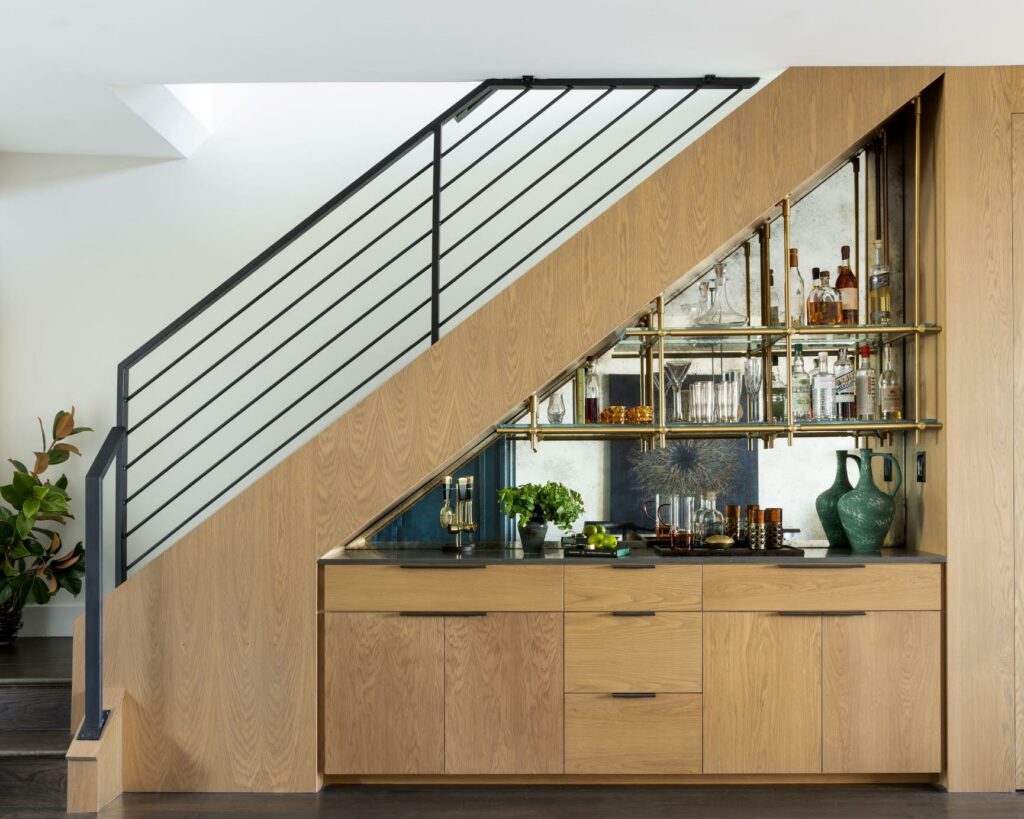
As the team has grown, she’s found it helpful to have someone on board who maintains the standards on everything from client presentations to construction documents. That job is done by Eric Hardrath, a part-time furniture maker who serves as senior design manager for Regan Baker Design.
“Having somebody like that in-house is huge,” she says. “I think everyone who is growing their firm (should have a position like that). You need a person everyone can go to see how we do things because I’m too busy for that and our senior designers are too busy for that. … It’s one person says, ‘yes’ or ‘no,’ who knows how things are intended to be.”
Her strategies and tips
So, Baker has a lot to keep her busy. How else does she keep her firm thriving? Read on for more.
DNN: You pride yourself on offering a high-level of service. How, specifically, do you do that?
RB: “We take care of everybody from the very beginning. … We are constantly on-site for either weekly or biweekly meetings, if our clients are interested in that, and we provide meeting minutes. We’re very detail oriented. … And, in general, if somebody asks us to do something, there’s nothing too small, especially if it’s the right client. … (And when it’s time to install), the homeowners go away, and we install everything from the warehouse so there’s a big reveal. The headaches are taken out of the equation for our clients.”
DNN: Your firm has grown significantly, with a strong staff of designers and senior designers. Do you still personally meet with every client?
RB: “I do. But some people have asked, ‘How can we work with you to reduce the fee?’ And, at this point, I can say, ‘I don’t have to be as involved.’ I’ve actually stepped back and not gone to a couple of meetings on a couple of projects and they’ve turned out really well, so I think I’ll do more of that moving forward. It’s good for my senior designers to really own something: It’s just more rewarding for them. But I do review everything before it goes out.”
DNN: How do you decide if a client is a good fit for your firm?
RB: “When we’re evaluating the project, we evaluate both the client and the scope. … The person needs to be the right fit for us in terms of being nice and understanding and valuing what we do. … At the beginning, it’s like dating. We just need to make sure we have a good rapport and are able to work together.”
DNN: How does the initial client interview process work?
RB: “We have an extensive questionnaire but that’s not filled out till we’ve taken the job. (Studio Director) Lindsay Brown does the first interview. We have a questionnaire online that’s pretty simple: square footage, address, project scope. Then Lindsay will go and have a conversation to understand what they’re wanting and needing and to see if it’s a good fit. Of course, at the same time, I’m looking at the house and if I’m inspired by the home, even if it’s a small project, I may want to get my hands on it. So, if Lindsey has a good interview and the home is exciting and it’s a great, nice client, I’ll take the next interview.”
DNN: Do you do much advertising for your firm these days or does most of your business come from referrals?
RB: “At this point, most of it is word of mouth. It’s a combination of repeat clients, referrals from past clients and referrals from industry partners. We have a high rate of returning clients, which I think defines us and speaks to our clients’ love of the experience. We do still do some marketing — digital and traditional channels and press placements — and we’ve hired Nylon (Consulting) out of New York, which has been really great.”
DNN: What’s a tool or item you can’t live without?
RB: “Greta! (Greta Carse is Baker’s executive assistant.) I’m finding myself with my time stretched thin, and time management is not my favorite task. I need help with that because I like to do it all. … So, having somebody who can manage my calendar and my time has been huge. She keeps me on top of things and moving forward. It’s been a game changer. In terms of software tools, we use Asana, Harvest and Studio Designer but I would say, right now, Greta is my biggest help.”
DNN: Is there an item you take with you on every project?
RB: “Paint decks. I always have a (Benjamin Moore) paint deck in the back of my car because there’s always a need for that. But honestly, I would say it’s my team. There’s no way I can do my job without them. It’s important to have efficient, trustworthy partners.”
DNN: Are you using artificial intelligence tools in your business?
RB: “We are not but I’d love to. I have a friend whose friend started an AI company for architecture, and I’ve been in conversation with her about it. … I think (AI) is going to be a huge component for us in the future. I think it’s going to be transformative.”
DNN: Do you have a mentor or adviser you can turn to when you need advice or guidance?
RB: “That’s one of the reasons I brought Lindsay on (in 2021). (Brown worked at Apple and Google before joining Regan Baker Design.) She’s got a great perspective. One of the ways I lead is to ask others’ opinions and then I make a decision. I also have two business consultants, Patrick Bell, who has been in the industry for a while, and Allie Stein, a past employee who started her own consulting business.
DNN: What’s ahead for you?
RB: “I did want to live in New York at one point in my career and it never happened, but one day, I’d like to have something there or do a project there. I love the East Coast.”
“One more thing: I’ve always been a huge proponent for collaborating with artists and artisans and being a platform for them. I really think the next step is either doing a product line or collaborating with artists and artisans to bring a product to life that we can become known for. … It’s something I’m excited about.”
